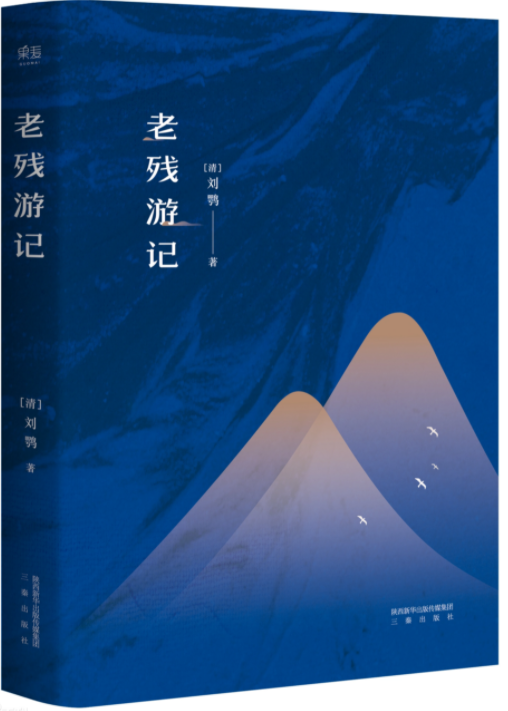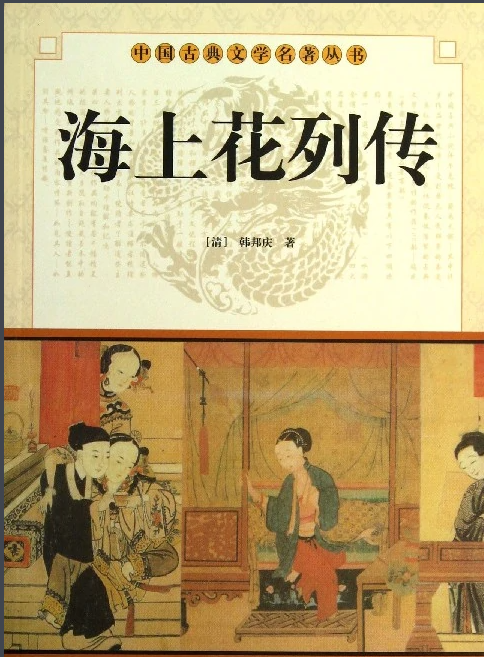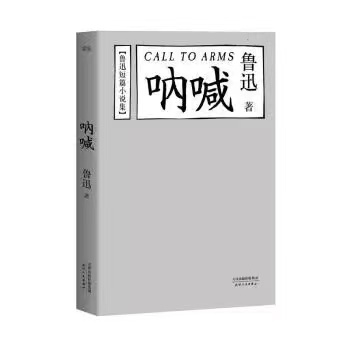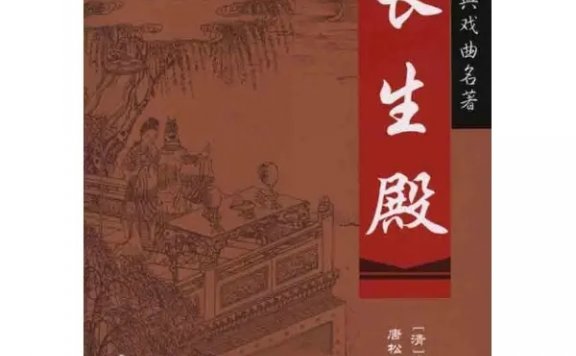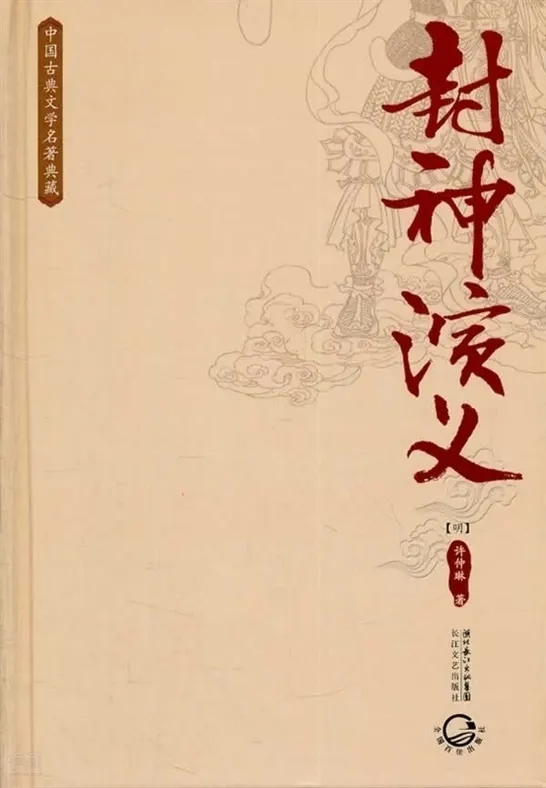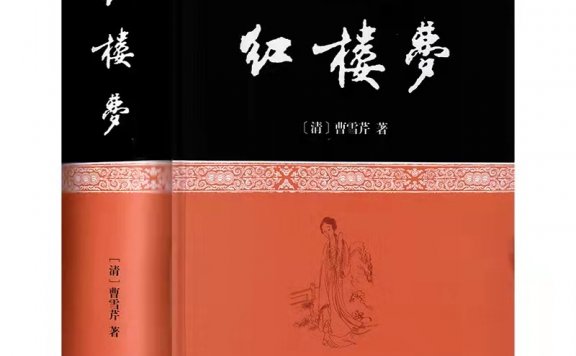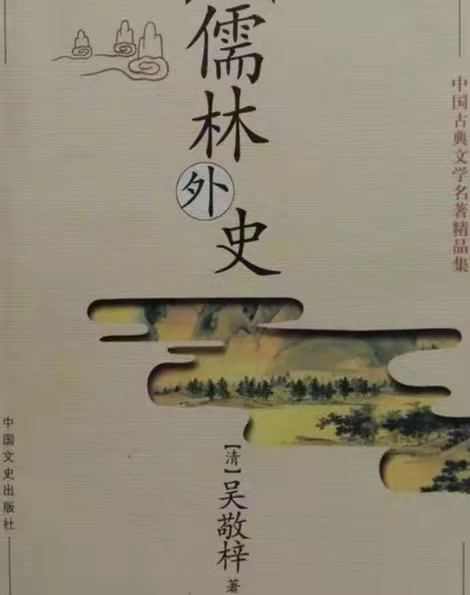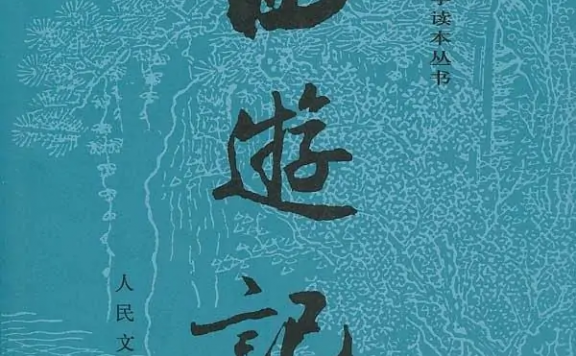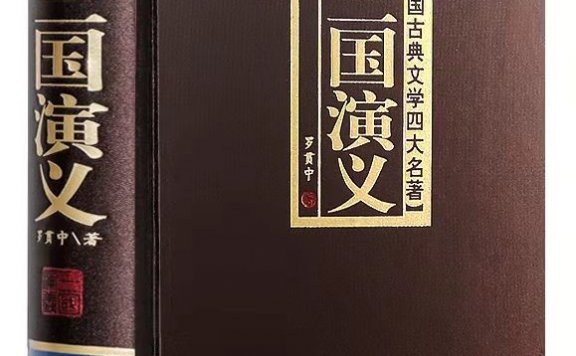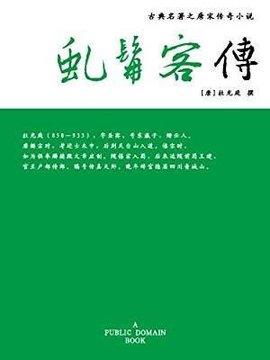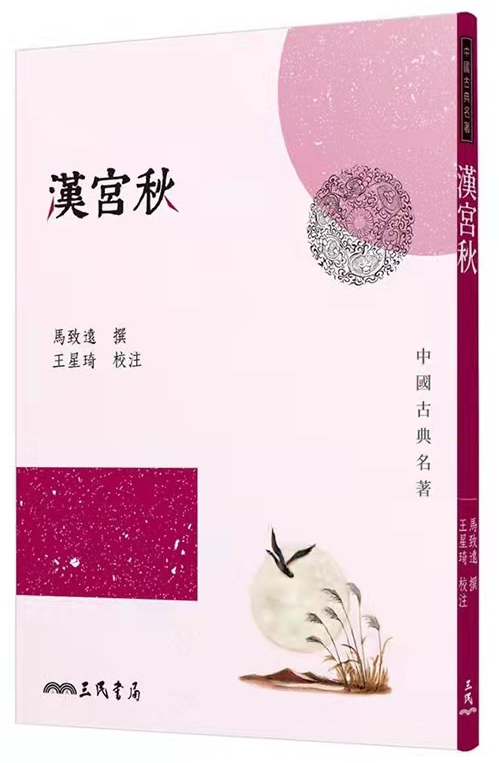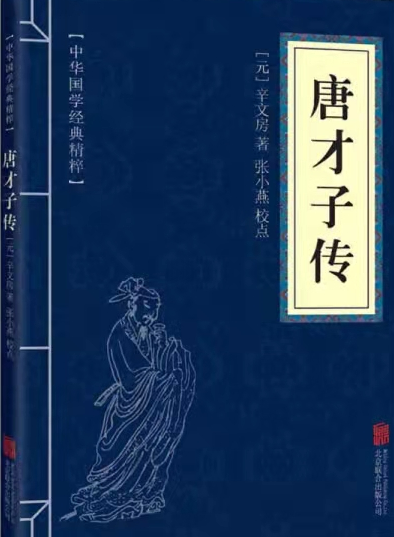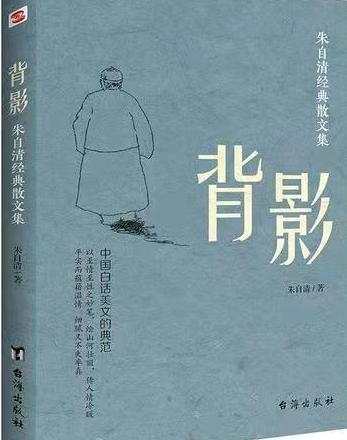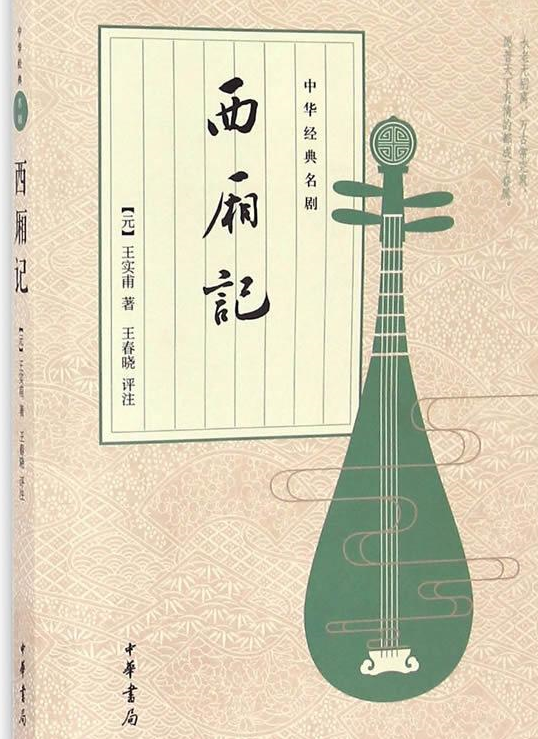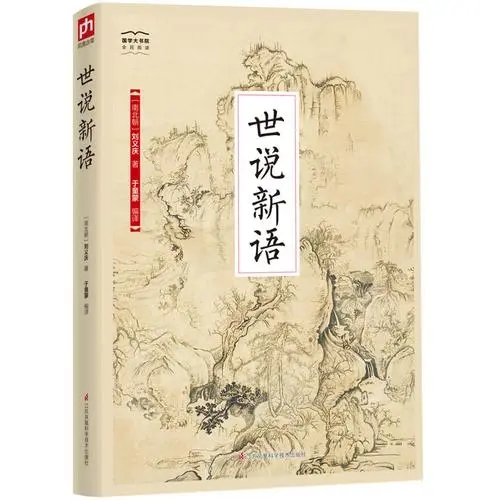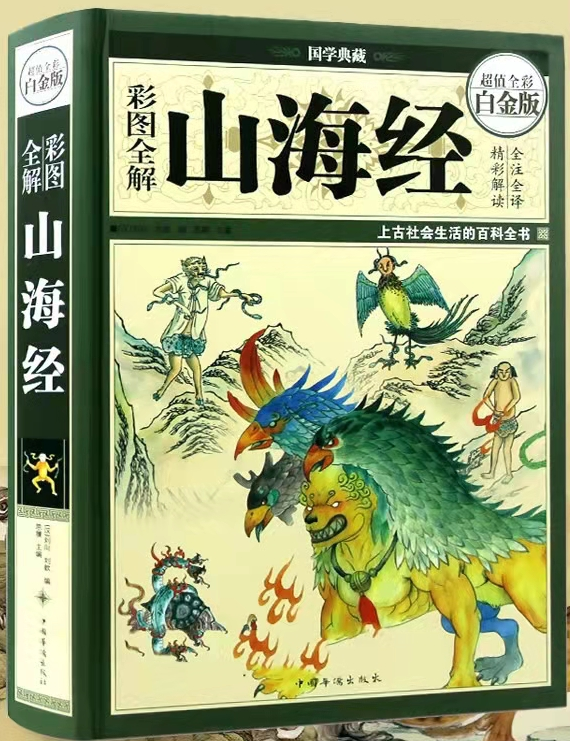The Travels of Lao Can 老残游记
The outstanding representative of the late Qing Dynasty condemnatory novel Overview Chinese Name: 老残游记English Name: The Travels of Lao CanOther Name: Lao Can’s TravelsAuthor: Liu E 刘鹗Originally Published: 1840-1912 (The late Qing Dynasty 晚清)Genre: Novel The Travels of Lao Can 老残游记 Brief Introduction of The Travels of Lao Can The Travels of Lao Can 老残游记 is the outstanding representative of the late Qing Dynasty 清末 condemnatory novel, which is the representative work of writer Liu E 刘鹗 in the late Qing Dynasty 清朝. The novel is based on the travels of a doctor named Lao Can 老残. It deeply explores the social contradictions, especially in his book, he dares to criticize the cruel officials for harming the country and the people, and points out with great insight that the stupidity of the cruel officials is often worse than that of corrupt officials. At the same time, the novel has reached an extremely high level in many aspects, such as the essence of national traditional culture, philosophy of life and art, female aesthetics and equality, character psychology and music scene description. the scene of cruel officials 酷吏情景 The Travels of Lao Can describes Lao Can's experiences and actions in his travels.…The Biography of Flowers on the Sea 海上花列传
The first dialect novel in the history of Chinese literature Overview Chinese Name: 海上花列传English Name: The Biography of Flowers on the SeaOther Name: Flowers on the Sea 海上花, Drawing Brothel Treasure Jian 绘图青楼宝鉴, Drawing Sea Brothel Romance 绘图海上青楼奇缘Author: Han Bangqing 韩邦庆Originally Published: 1840-1912 (The late Qing Dynasty 晚清)Genre: Novel The Biography of Flowers on the Sea 海上花列传 Brief Introduction of the Biography of Flowers on the Sea The Biography of Flowers on the Sea 海上花列传 is the first dialect novel in the history of Chinese literature. It is a famous novel written by Han Bangqing 韩邦庆 in the late Qing Dynasty 清朝. It is also called "Drawing brothel treasure Jian 绘图青楼宝鉴", "Drawing sea Brothel romance 绘图海上青楼奇缘". Eileen Chang 张爱玲 once translated it into Mandarin and named it "Flowers on the Sea 海上花". Prostitutes in Shanghai during the late Qing Dynasty 晚清时上海的妓女 The novel has 64 chapters. Its main content is to write about the brothel life in Shanghai上海, China in the late Qing Dynasty, involving the official circles, business circles and the related social level. It is a novel in the late Qing Dynasty which mainly describes brothels. It follows the story of Zhao Puzhai 赵朴斋 and Zhao Erbao 赵二宝,…The Peach Blossom Fan 桃花扇
China's first historical drama reflecting the demise of the Southern Ming Dynasty Overview Chinese Name: 桃花扇English Name: The Peach Blossom FanAuthor: Kong Shangren 孔尚任Originally Published: In 1708(Qing Dynasty 清朝)Genre: Legend (drama) The Peach Blossom Fan 桃花扇 Brief Introduction of The Peach Blossom Fan The Peach Blossom Fan 桃花扇 is the first Chinese historical drama to reflect the demise of the Southern Ming Dynasty 南明朝. It is a legendary play written by Kong Shangren 孔尚任, a writer in the Qing Dynasty 清朝, and the first draft was published in 1708. The Peach Blossom Fan is a story set in Nanjing 南京 in the late Ming Dynasty 晚明时期. The drama takes Hou Fangyu 侯方域 and Li Xiangjun's 李香君 joys and sorrows as the main line, showing the social reality of Nanjing in the late Ming Dynasty. At the same time, it reveals the reasons for the decline and fall of the Hongguang 弘光 regime, praises the national heroes who are loyal to the country and the bottom people, and shows the pain of the Ming Dynasty's survivors. Hou Fangyu inscribed poem fan was given to Li Xiangjun as a token. 侯方域题诗扇为信物赠给李香君。 The Peach Blossom Fan is composed of 44 plays, and the…Strange Tales from a Chinese Studio 聊斋志异
The satirizes of greed and tyranny are vivid Overview Chinese Name: 聊斋志异English Name: Strange Tales from a Chinese StudioOther Name: Strange Stories from a Chinese Studio, Liaozhai ZhiyiAuthor: Pu Songling 蒲松龄Originally Published: In 1636-1912 (Qing Dynasty 清朝)Genre: Collection of short stories Strange Tales from a Chinese Studio 聊斋志异 Brief Introduction of Strange Tales from a Chinese Studio Strange Tales from a Chinese Studio 聊斋志异 is a collection of short stories in classical Chinese written by Pu Songling 蒲松龄, a famous novelist and litterateur of the Qing Dynasty 清朝. It was evaluated as "The satirizes of greed and tyranny are vivid". Strange Tales from a Chinese Studio means recording strange stories in his study room. Liaozhai 聊斋 is the name of the author's study room, "Zhi" 志means narration and "Yi"异 means strange stories. The book, which has nearly 500 chapters, can be divided into the following types according to its subject matter: About love, attack the rigid and decadent imperial examination system, expose the exploitation of the people by the rulers. Nie Xiaoqian and Ning Caichen 聂小倩和宁采臣 First, love stories occupy the largest proportion of the book. Most of the main characters in the stories bravely pursue free love without fear…Call to Arms 呐喊
The starting point of modern Chinese vernacular novels Overview Chinese Name: 呐喊English Name: Call to ArmsOther Name: NahanAuthor: Lu xun 鲁迅Originally Published: In 1923 Genre: Novel Call to Arms 呐喊 Brief Introduction of Call to Arms Call to Arms 呐喊 is a collection of short stories by Lu Xun 鲁迅, a modern writer. It is a collection of 14 short stories written by Lu Xun between 1918 and 1922. It was published in 1923 and is now included in volume 1 of The Complete Works of Lu Xun 鲁迅全集. Call to Arms is the starting point of modern Chinese vernacular novels and the forerunner of modern realism literature. It established Lu Xun's position in the history of modern Chinese literature and culture. The collection truly depicts social life from the Revolution of 1911 to the May 4th Movement五四运动. Starting from the revolutionary democracy, with the aim of enlightenment and humanitarianism, it reveals various deep-seated social contradictions, deeply analyzes and completely negates the old Chinese system and some outdated traditional ideas. It shows a strong sense of national survival and strong hope for social change. The Scream includes 14 novels, including A Madman's Diary 狂人日记, Kong Yiji 孔乙己, Medicine 药, The…The Palace of Eternal Life 长生殿
A legendary masterpiece that shocked the early Qing Dynasty drama circle Overview Chinese Name: 长生殿English Name: The Palace of Eternal LifeOther Name: The Palace of Eternal YouthAuthor: Hong Sheng 洪昇Originally Published: In1688 (Qing Dynasty 清朝)Genre: Legend (drama) The Palace of Eternal Life 长生殿 Brief Introduction of The Palace of Eternal Life The Palace of Eternal Life 长生殿 is a legendary masterpiece that shocked the early Qing Dynasty 清朝 drama circle created by Hong Sheng 洪昇, a playwright in the early Qing Dynasty 清初. The Palace of Eternal Life focuses on the disaster brought to the country by the ill-fated emperor and political corruption during the Tianbao period 天宝年间 of the Tang Dynasty 唐朝, which almost led to the collapse of the dynasty. Although the script condemns Tang Ming Huang's extravagance, it also expresses sympathy for the love between Tang Ming Huang 唐明皇 and Yang Guifei 杨贵妃. It indirectly expressed the Ming Emperor's sympathy, but also placed the ideal of beautiful love. A picture of the Palace of Eternal Life. 长生殿图片 It consists of two volumes. There are 50 plays in this play, which can be divided into two parts according to the content. The first 25 plays are the first…Er Pai 二拍
The first collection of short stories written independently by Chinese literati Overview Chinese Name: 二拍English Name: Er PaiAuthor: Ling Mengchu 凌濛初Originally Published: In 1368-1644(Ming Dynasty 明朝)Genre: Short story Er Pai 二拍 Brief Introduction of Er Pai Er Pai 二拍 is the first collection of short stories written independently by Chinese literati, written by Ling Mengchu 凌濛初 of the Ming Dynasty 明朝. San Yan is the collective name of Slapping the Table in Amazement 初刻拍案惊奇 and Second Slapping the Table in Amazement 二刻拍案惊奇. It and San Yan 三言 written by Feng Menglong 冯梦龙 together called "San Yan Er Pai 三言二拍". The work is mostly based on some interesting anecdotes from the past and the present, and edited into articles to meet the needs of the public, but also to encourage and punish. It fully affirmed the human desire to expose the darkness of the official government, attack the crime of corrupt officials as the theme. However, there are many negative and backward elements, such as feudal superstition, karma, fatalism and pornography. Er Pai is divided into two episodes, 40 episodes each, a total of 80 episodes. Its content generally includes the following four aspects. Slapping the Table in Amazement 初刻拍案惊奇 One…Investiture of the Gods 封神演义
Fantastical novels about gods and demons Overview Chinese Name: 封神演义English Name: Investiture of the GodsOther Name: The Creation of the Gods, Fengshen Bang 封神榜Author: Xu Zhonglin 许仲琳Originally Published: In 1368-1644(Ming Dynasty 明朝)Genre: Novels Investiture of the Gods 封神演义 Brief Introduction of Investiture of the Gods The Investiture of the Gods 封神演义 is a fantastical novels about gods and demons written by Xu Zhonglin 许仲琳 in the Ming Dynasty 明朝. The novel, with historical and political concepts as the ideological framework to support the book, mixed with a lot of grand imagination. It shows the author's support and praise for the virtuous master and his discontent and revolt against the evil king. This book is a total of 100 chapters. It roughly divided into four parts from the content of King Zhou 纣王 fatuous, Shang's war against Xiqi 殷商伐西岐, King Wu's war against Zhou 周武王伐纣, Jiang Ziya's return to the kingdom to enthrone god 姜子牙归国封神. King Zhou and Daji were drinking and enjoying themselves 纣王和妲己在饮酒作乐 The first part describes the poem written by King Zhou 纣王 in Nu Wa Palace 女娲宫, which desecrates the goddess Nu Wa and Nu Wa is furious. Nu Wa send a thousand years of fox demon…San Yan 三言
The outstanding representative of Chinese vernacular short stories Overview Chinese Name: 三言English Name: San YanAuthor: Feng Menglong 冯梦龙Originally Published: In 1368-1644(Ming Dynasty 明朝)Genre: Short story San Yan 三言 Brief Introduction of San Yan San Yan 三言 is the outstanding representative of Chinese vernacular short stories written by Feng Menglong 冯梦龙 in Ming Dynasty 明朝. San Yan is the collective name of Stories to Enlighten the World 喻世明言, Stories to Caution the World 警世通言, and Stories to Awaken the World 醒世恒言. It and Er Pai 二拍 written by Ling Mengchu 凌濛初 together called "San Yan Er Pai 三言二拍". Its appearance marks the arrival of the climax of the collation and creation of ancient vernacular short stories. San Yan reflects Feng Menglong's extremely complicated thoughts. While deconstructing the traditional cultural thoughts with the newly emerging humanistic thoughts in ancient times, it also absorbed the Confucian thoughts of Taoism 释道的儒家思想. Stories to Enlighten the World was originally called Stories Old and New 古今小说. It consists of 40 volumes, one in each volume, altogether 40 chapters. Most of the works in The book are based on real life, and those about love and marriage are in a prominent position. Some of them directly reflect…Dream of the Red Chamber 红楼梦
The best masterpiece in the history of Chinese classical novels Overview Chinese Name: 红楼梦English Name: Dream of the Red ChamberOther Name: Dream of the red Mansions, The Story of the Stone 石头记Author: Cao Xueqin 曹雪芹Originally Published: 1791-1912 (Qing Dynasty 清朝)Genre: Novel Dream of the Red Chamber 红楼梦 Brief Introduction of Dream of the Red Chamber Dream of the Red Chamber 红楼梦 is an ancient Chinese full-length novel of Zhang Hui style 章回体 and the best masterpiece in the history of Chinese classical novels written by Cao Xueqin 曹雪芹 in the Qing Dynasty 清朝. Together with the Romance of The Three Kingdoms 三国演义, Water Margin 水浒传 and Journey to the West 西游记, it is one of the Four Great Classical Novels in China 中国四大名著. It has 120 chapters. The novel takes the rise and fall of Jia Family 贾府, Shi Family 史府, Wang Family 王府 and Xue Family 薛府 as the background, takes the rich child Jia Baoyu 贾宝玉 as the angle of view, takes the tragic love and marriage of Jia Baoyu, Lin Daiyu 林黛玉 and Xue Baochai 薛宝钗 as the main line, describes the life of some boudoir beauties based on their behavior and insight and shows the real…The Unofficial History of the Scholars 儒林外史
Holy objects in ancient Chinese satirical novels Overview Chinese Name: 儒林外史English Name: The Unofficial History of the ScholarsOther Name: Rulin waishi, The ScholarsAuthor: Wu Jingzi 吴敬梓Originally Published: In 1750 (Qing Dynasty 清朝)Genre: Novel The Unofficial History of the Scholars 儒林外史 Brief Introduction of The Unofficial History of the Scholars The Unofficial History of the Scholars 儒林外史 is the holy objects in ancient Chinese satirical novels written by Wu Jingzi 吴敬梓 in the Qing Dynasty 清朝. It is a full-length novel. The Unofficial History of the Scholars represents the peak of satirical novels in ancient China and creates an example of evaluating real life directly by fiction. The book began to be written in the early Ming Dynasty 明初, lasted about 248 years, through the rise and fall of a dynasty. Fifty-six chapters of the book depict the different expressions of "fame and wealth" by various people in realism. On the one hand, it really revealed the process and reason of human nature being corroded, and deeply criticized and ridiculed the corruption of local officials, the malpractice of imperial examinations and the hypocrisy of ethical codes. On the one hand, it enthusiastically praises the guardian of human nature made by a…Journey to the West 西游记
The first colorful romantic mythological novel in ancient China Overview Chinese Name: 西游记English Name: Journey to the WestAuthor: Wu Cheng 'en 吴承恩Originally Published: In 1592 (Ming Dynasty 明朝)Genre: Novel Journey to the West 西游记 Brief Introduction of Journey to the West Journey to the West西游记 is the first colorful romantic mythological novel in ancient China written by Wu Cheng 'en 吴承恩 in the Ming Dynasty 明朝. Together with the Romance of The Three Kingdoms 三国演义, Water Margin 水浒传 and Dream of the Red Chamber 红楼梦, it is one of the Four Great Classical Novels in China 中国四大名著. It has 100 episodes in all. It tells the story of Sun Wukong 孙悟空, Zhu Bajie 猪八戒, Sha Wujing 沙悟净 together with a white horse escort Tang Xuanzang 唐玄奘 to the West to obtain authentic scriptures, and they encounter many demons and difficulties all the way, through 81 difficulties, get back the true scriptures, the final correction of the fruit of the story. It profoundly describes the social life of the Ming people. A stone monkey was born in Huaguo Mountain 花果山 in The Aolai kingdom 傲来国 of East China. The stone monkey later became a disciple of Bodhi Patriarch 菩提祖 who named him Sun…Water Margin 水浒传
The model of heroic romances in ancient China Overview Chinese Name: 水浒传English Name: Water Margin Other Name: Outlaws of the Marsh, All Men are BrothersAuthor: Shi Nai'an 施耐庵Originally Published: AD?~1398 (Late Yuan and early Ming 元末明初)Genre: Chapter novels Water Margin 水浒传 Brief Introduction of Water Margin Water Margin 水浒传 is a model of Chinese ancient heroic and legendary novels, written by Shi Nai'an 施耐庵, a novelist in the late Yuan and early Ming 元末明初. It is also one of the Four Classic Novels 四大名著. It mainly describes the story of 108 heroes led by Song Jiang 宋江 in Mount Liang 梁山, Shandong province 山东省, in the late Northern Song Dynasty 北宋. The book describes the heroic heroes in Mount Liang who resist oppression, grow their ranks and are recruited by the Song Dynasty. After being recruited, they fight for the Song Dynasty and finally die out. It artistically reflects the whole process of the Song Jiang Uprising from occurrence, development to failure in Chinese history. It deeply reveals the social root of the uprising, enthusiastically eulogizes the rebellion struggle of the heroes and their social ideals, and concretely reveals the internal historical reasons for the failure of the uprising. Because…The Peony Pavilion 牡丹亭
A romantic masterpiece in Chinese opera history Overview Chinese Name: 牡丹亭English Name: The Peony PavilionOther Name: The Return of Soul at the Peony Pavilion 牡丹亭还魂记Author: Tang Xianzu 汤显祖Originally Published: In 1617 (Ming Dynasty 明朝)Genre: Legend The Peony Pavilion 牡丹亭 Brief Introduction of The Peony Pavilion The Peony Pavilion 牡丹亭, a masterpiece of Romanticism in the history of Chinese opera, was written by Tang Xianzu 汤显祖, a Ming Dynasty 明朝 playwright. The play describes the story of Du Liniang 杜丽娘, daughter of an official, falling in love with Liu Mengmei 柳梦梅, a scholar in her dream. Du Liniang died of a broken heart and turned into a soul to find her lover in reality. She fell in love with a ghost and a man, and finally came back from the dead and married Liu Mengmei forever. It is one of the four classical operas in China together with The Romance of the Western Chamber 西厢记, The Injustice to Dou E 窦娥冤 and The Palace of Eternal Life 长生殿. Du Liniang is beautiful and sentimental. She is the beginning of love period, but for the feudal ethics of the home imprisoned, can not get freedom and love. Du Liniang yearned for love…Romance of the Three Kingdoms 三国演义
The first work of Chinese chapter style historical novels Overview Chinese Name: 三国演义English Name: Romance of the Three KingdomsAuthor: Luo Guanzhong 罗贯中Originally Published: AD ?~1398 (Late Yuan Dynasty early Ming Dynasty 元末明初)Genre: Chapter style historical novels 章回体历史小说 Romance of the Three Kingdoms 三国演义 Brief Introduction of Romance of the Three Kingdoms Romance of the Three Kingdoms 三国演义 is the first work of Chinese chapter style historical novels created by Luo Guanzhong 罗贯中, a novelist in the late Yuan and early Ming Dynasties. According to Chen Shou 陈寿 Records of the Three Kingdoms 三国志 and Pei Songzhi 裴松之 notes and folk stories of The Three Kingdoms 三国 created through artistic processing. Together with Journey to the West 西游记, Water Margin 水浒传 and Dream of the Red Chamber 红楼梦, it is known as the Four Great Classical Novels 四大名著 of China. The author describes the history of nearly a hundred years in classical Chinese with changeable style and macro frame. The novel can be roughly divided into the"Yellow Turban Insurrectionary Uprising 黄巾起义", "Dong Zhuo's Rebellion 董卓之乱", "Qun Xiong Zhu Lu 群雄逐鹿", "Three Kingdoms Tripartite Confrontation 三国鼎立", "Jin Unified the Three Kingdoms 三国归晋". It describes the history of nearly a hundred years from…The Man with the Curly Beard 虬髯客传
It is the earliest classical swordsman novel in China Overview Chinese Name: 虬髯客传English Name: The Man with the Curly BeardAuthor: Du Guangting 杜光庭Originally Published: AD ?-907 (The late Tang Dynasty 晚唐)Genre: Swordsman novel The Man with the Curly Beard 虬髯客传 Brief Introduction of The Man with the Curly Beard The Man with the Curly Beard 虬髯客传 is a Tang Dynasty legend (novel) 唐代传奇 created by Du Guangting 杜光庭 in the late Tang Dynasty. It is the earliest classical swordsman novel in China, collected in Volume 193 of "Taiping Guangji 太平广记". The Man with the Curly Beard takes the love story of Hong Fu 红拂 and Li Jing's 李靖 elopement as the clue, and describes the story of a bearded man who wanted to become a king in the Tang Dynasty, who succumbed to Li Shimin 李世民 and quit to become independent. It twists and turns to reflect the broad people's hatred of war, look forward to peace and stability of the world's good wishes. "The Man with the Curly Beard" in the three leading roles - Feng Chen San Xia 《虬髯客传》中的三个主角——风尘三侠 The novel successfully depicts the images of Li Jing, Hong Fu and the bearded man, who are called the…Autumn in Han Palace 汉宫秋
A tragic masterpiece of realism that subverts history Overview Chinese Name: 汉宫秋English Name: Autumn in Han PalaceOther Name: A Lone Goose in Autumn over the Palaces of Han 破幽梦孤雁汉宫秋Author: Ma Zhiyuan 马致远Originally Published: AD 1271-1368 (Yuan Dynasty 元朝)Genre: Historical play, Zaju 杂剧 Autumn in Han Palace 汉宫秋 Brief Introduction of Autumn in Han Palace "Autumn in Han Palace" 汉宫秋 is a tragic masterpiece of realism that subverts history. It is created by Ma Zhiyuan 马致远, a writer of the Yuan Dynasty. Its full name is A Lone Goose in Autumn over the Palaces of Han 破幽梦孤雁汉宫秋. It is one of the four tragedies of the Yuan Dynasty. The play was created by the author based on folk legends and the notes of scholars of the past dynasties rather than on the basis of official history. The whole play consists of 4 acts and 1 wedge. It is a story about emperor Yuan of the Western Han Dynasty 西汉元帝 who was threatened by the Xiongnu 匈奴 and was forced to send his favorite concubine Wang Zhaojun 王昭君 on a pilgrimage. Emperor Yuan of Han Dynasty because of lonely harem, listened to Mao Yanshou 毛延寿 advice, let him to the folk beauty…Tang Cai Zi Zhuan 唐才子传
Commentaries on the poets of Tang and The Five Dynasties Overview Chinese Name: 唐才子传English Name: Tang Cai Zi ZhuanAuthor: Xin Wenfang 辛文房Originally Published: AD 1271-1368 (Yuan Dynasty 元朝)Genre: Commentaries Tang Cai Zi Zhuan 唐才子传 Brief Introduction of Tang Cai Zi Zhuan The Tang Cai Zi Zhuan 唐才子传 is a collection of commentaries compiled by Xin Wenfang 辛文房 in the Yuan Dynasty 元朝, which records the brief commentaries of poets in the Tang and Five Dynasties 唐和五代. China is a country of poetry. The Tang Dynasty was the peak of poetry. The Tang Cai Zi Zhuan consists of ten volumes. This book records the deeds of the poets in the middle and late Tang Dynasty 晚唐 in detail, including some poems of the Five Dynasties. In the book, a large amount of life information of Tang poets is preserved, and the description of their imperial examination experience is more detailed. Part of the legend of Tang Cai Zi Zhuan 唐才子传里的部分内容 The Tang Cai Zi Zhuan is listed as a compulsory reading of the introduction to Sinology 国学. It is the crystallization of years of collaborative research by more than 20 Scholars of Tang Dynasty literature and history, and represents the highest…Retreating Figure 背影
It is the most profound language in heaven and earth. Overview Chinese Name: 背影English Name: Retreating Figure; BeiyingAuthor: Zhu Ziqing 朱自清Originally Published: 1928 Genre: Literature, Prose Retreating Figure 背影 Brief Introduction of Retreating Figure Retreating Figure 背影 is the first between heaven and earth to the deep feelings of the text. It is a reminiscence essay written by modern writer Zhu Ziqing 朱自清 in 1928. When he left Nanjing 南京 for Peking University 北京大学, his father saw him off at Pukou Railway Station 浦口火车站, watched him get on the train and bought some oranges for him. What impressed the author most was the view of his father climbing up and down the platform as he bought oranges for him. The author uses simple words to express the father's love for his children deeply and delicately, sincere and touching, showing the father's care and love from ordinary events. The characteristic of this essay is to capture the character's characteristic "Retreating Figure" proposition and express deep feelings of father and son in the narration. In the article, there are four figures, which are the memory of the figure, the station farewell figure, buy orange railway figure and missing the figure. His father…Romance of the Western Chamber 西厢记
A masterpiece of realism in Chinese Classical Drama Overview Chinese Name: 西厢记English Name: Romance of the Western ChamberOther Name: The Story of the Western Wing, The West Chamber, Romance of the Western BowerAuthor: Wang Shifu 王实甫Originally Published: AD 1271-1368 (Yuan Dynasty 元朝)Genre: Literature, Zaju 杂剧 Romance of the Western Chamber 西厢记 Brief Introduction of Romance of the Western Chamber The Romance of the Western Chamber 西厢记 is a Zaju 杂剧 created by Wang Shifu 王实甫 of the Yuan Dynasty. It is a masterpiece of realism of Chinese classical drama. It has a total of five books with twenty-one discounts and a complete story, which is rare in ancient Zaju. The plot Festival is fascinating, vivid, elegant and poetic. The Romance of the Western Chamber describes that scholar Zhang Junrui 张君瑞, who was on his way to the imperial examination, ran into Cui Yingying 崔莺莺, the daughter of the former prime minister, and fell in love with her at first sight. In order to see more Yingying several times, he lived in the West Chamber 西厢 of the Pujiu temple 普救寺. They loved each other and poetry. Zhang Junrui is dating Cui Yingying. 张君瑞与崔莺莺约会 Later, the rebel general Sun Feihu 孙飞虎…Taiping Guangji 太平广记
The longest existing collection of classical novels in China Overview Chinese Name: 太平广记English Name: Taiping GuangjiOther Name: Extensive Records of the Taiping Era, Extensive Records of the Taiping Xinguo PeriodAuthor: Compiled by 14 authors, including Li Fang 李昉, Hu Meng 扈蒙, etcOriginally Published: AD 978(Northern Song 北宋)Genre: Documentary, Novel Taiping Guangji 太平广记 Brief Introduction of Taiping Guangji Taiping Guangji 太平广记 is the first collection of classical Chinese documentary novels. It was compiled by 14 persons including Li Fang and Hu Meng under the order of Emperor Taizong 宋太宗 of the Song Dynasty. Because it was written in the Song Dynasty during the reign of Taiping Xingguo 太平兴国, it was called "Taiping Guangji". The book consists of 500 volumes and 10 volumes of contents. It is a kind of miscellaneous works based on factual stories from the Han Dynasty 汉朝 to the early Song Dynasty. The book is divided into 92 categories and more than 150 subsections according to the subject matter, with supernatural and strange stories accounting for the largest proportion. The book is basically a collection of ancient stories compiled by category. Many lost books, only in this book memory has lost text, some of the Six dynasties 六朝…A New Account of the Tales of the World 世说新语
It is the representative work of recording characters' words and deeds and anecdotes in the Northern and Southern Dynasties Overview Chinese Name: 世说新语English Name: A New Account of the Tales of the WorldOther Name: Shishuo XinyuAuthor: Liu Yiqing 刘义庆Originally Published: AD 420-479 (Southern Song 南宋)Genre: Note novels A New Account of the Tales of the World 世说新语 Brief Introduction of A New Account of the Tales of the World A New Account of the Tales of the World 世说新语 is a collection of stories written by Liu Yiqing , a literary scholar of Southern Song, and a masterpiece of "note novels" in Wei 魏, Jin 晋 and Southern and Northern Dynasties 南北朝. It mainly records the words and deeds and anecdotes of some famous scholars from the late Eastern Han Dynasty 西汉朝 to Wei and Jin Dynasty. It has 36 chapters in 6 volumes, with elegant and popular language, wit and humor, and a combination of plain description and rhetoric. According to the content, The Book can be divided into 36 categories, such as "Virtue 德行", "Political affairs 政事" and "Fang Zheng 方正". Each category has a number of stories. There are more than 1,200 stories in the whole book,…The Injustice to Dou E 窦娥冤
The masterpiece of ancient Chinese tragedy Overview Chinese Name: 窦娥冤English Name: The Injustice to Dou EOther Name: Dou E Yuan, Snow in MidsummerAuthor: Guan Hanqing 关汉卿Originally Published: In 1582 (Ming dynasty 明朝)Genre: Literature, Zaju 杂剧 The Injustice to Dou E 窦娥冤 Brief Introduction of The Injustice to Dou E The Injustice to Dou E 窦娥冤 is a drama created by Guan Hanqing 关汉卿, a dramatist of the Yuan Dynasty 元朝. It is a masterpiece of ancient Chinese tragedy. Under the background of the cruel oppression and exploitation of the people by the rulers of the Yuan Dynasty, Guan Hanqing, like many scholars at that time, used the form of drama to expose the evils of officialdom and social injustice. The Injustice to Dou E has four-folds. The first fold tells the story of Dou E and her husband's death less than two years after their marriage. Dou E lives with Cai Po 蔡婆 (Dou E's mother-in-law). Cai Po debt collection did not succeed, but almost strangled by the other side, just was saved by Zhang Lver 张驴儿 and his father. Zhang Lver took the opportunity to move into Cai's home and coerced Cai Po and his father marry. He threatened…Classic of Mountains and Seas 山海经
The origin of Chinese ancient myth novels Overview Chinese Name: 山海经English Name: Classic of Mountains and SeasOther Name: Shan Hai JingAuthor: Anonymous 佚名Originally Published: 475 BC-9 AD(The Warring States Period to the early Han Dynasty 战国时期至汉代初期)Genre: Literature, Encyclopedia Classic of Mountains and Seas 山海经 Brief Introduction of Classic of Mountains and Seas The Classic of Mountains and Seas 山海经 is an important ancient book in the pre-Qin 先秦 period of China. It is considered as the origin of Chinese ancient myth novels, and modern scholars call it an encyclopedia of ancient times. As for its author, predecessors have believed that Dayu 大禹 and Boyi伯益, after the Western Han Dynasty 西汉 Liu Xiang 刘向 and Liu Xin 刘歆 edited. Only the formation of handed down books, modern scholars believe that it into a book is not at that time. The author is not a person and the specific time and author of the book has no confirmation. The book has been handed down 18 volumes, mainly composed of " Classic of Mountains"山经 and " Sea Classic" 海经 , including 5 volumes of Classic of Mountains and 13 volumes of Sea Classic. The age of each volume is uncertain. The Classic of…
Chinese books
❯
Profile
Cart
Coupons
Message
Message
Search
Customer service
Scan to open current page
Top
Checking in, please wait
Click for today's check-in bonus!
You have earned {{mission.data.mission.credit}} points today!
My Coupons
- ¥CouponsLimitation of useExpired and UnavailableLimitation of use
before
Limitation of usePermanently validCoupon ID:×Available for the following products: Available for the following products categories: Unrestricted use:Available for all products and product types
No coupons available!
Unverify
Daily tasks completed:
